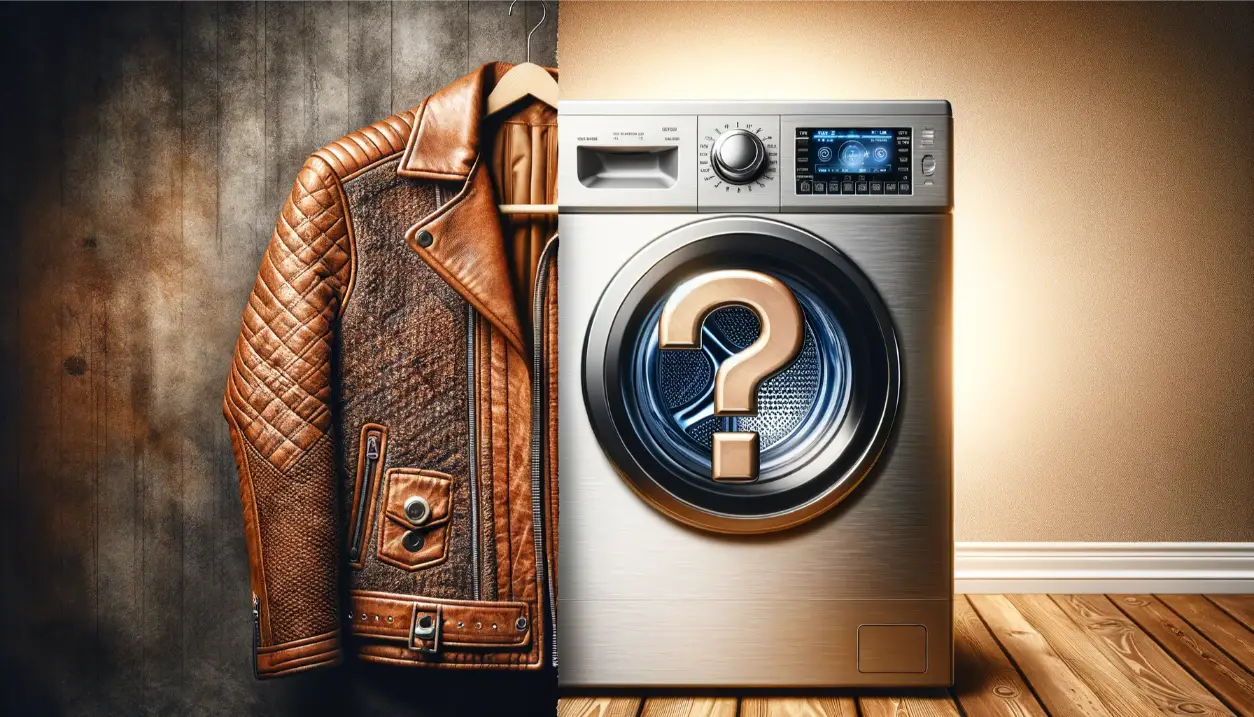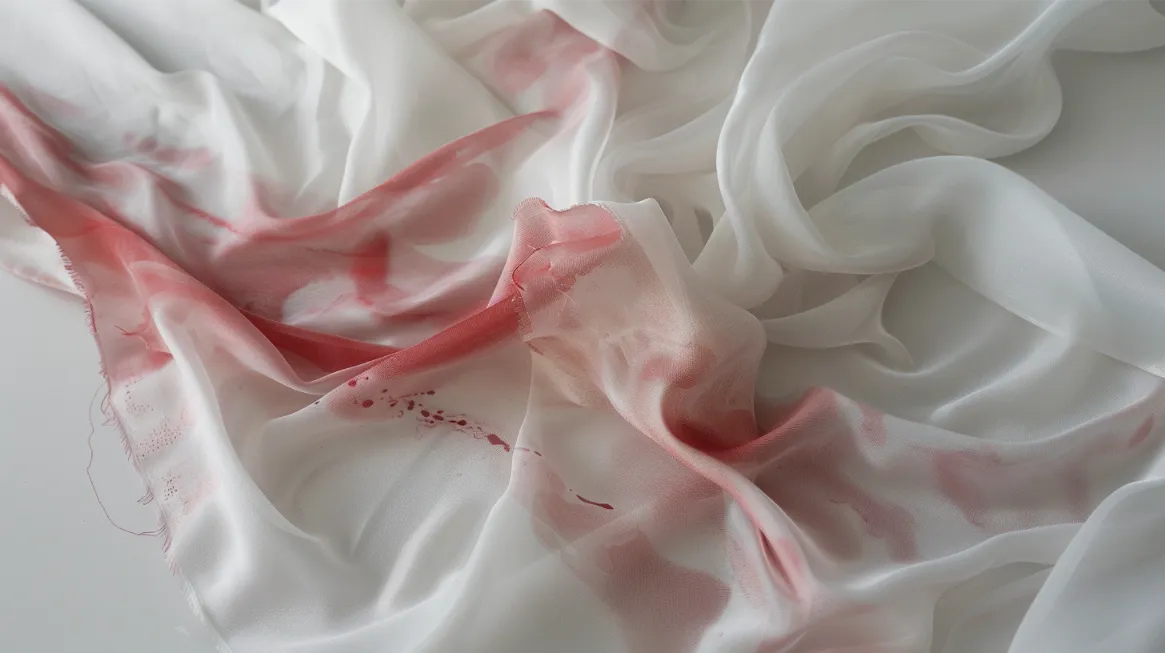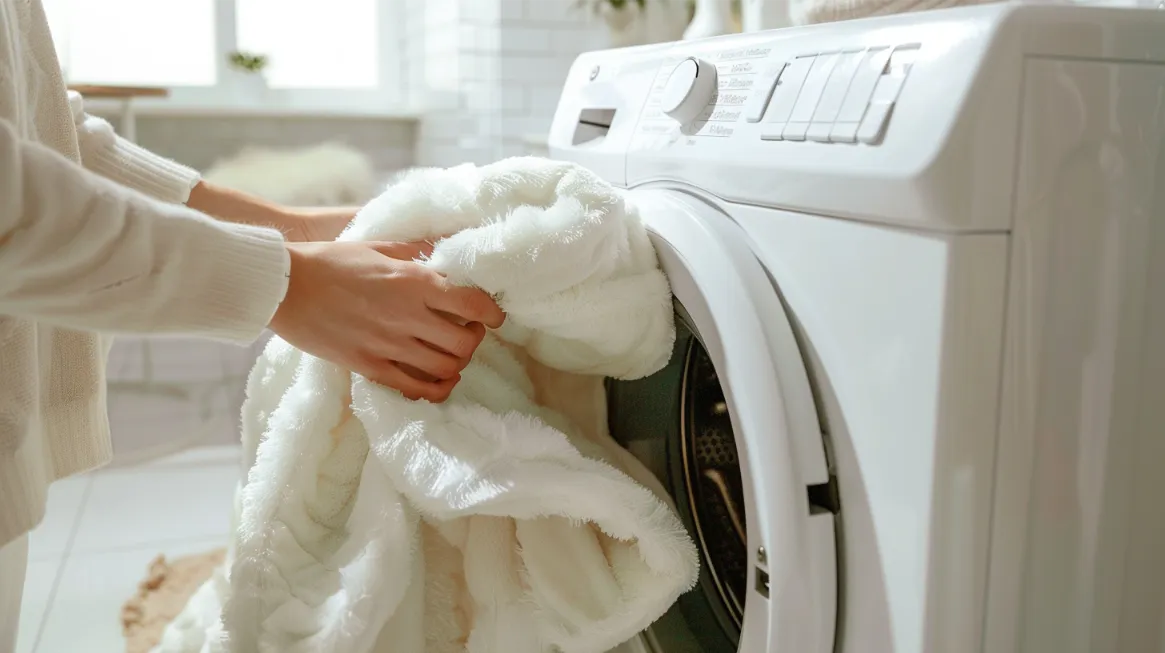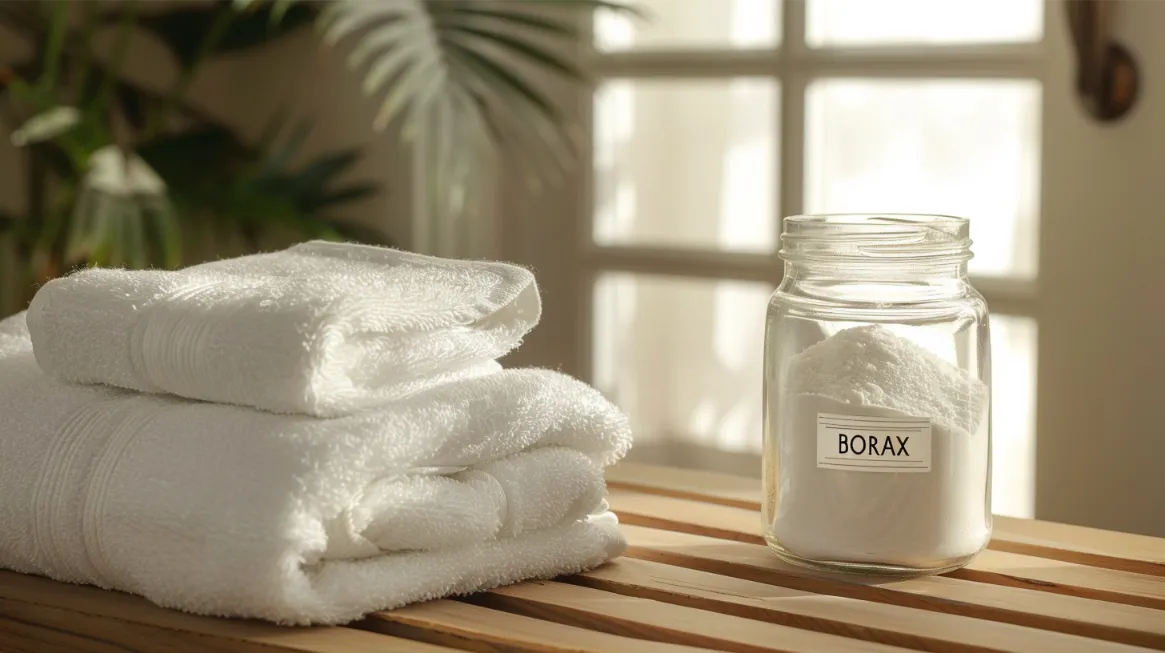Maintaining the quality and longevity of your linen sheets is essential to ensuring a comfortable and luxurious sleep experience.
This article will explore ten easy steps to wash your linen sheets effectively.
From choosing the right detergent to properly storing your sheets, we will cover all aspects of linen sheet care.
So, if you want to discover the secrets of keeping your linen sheets looking and feeling fresh, join us as we unveil the key to effective linen sheet washing.
Key Takeaways
- Follow care label instructions and pre-treat stains before washing to ensure proper linen sheet care.
- Choose a mild liquid detergent and avoid harsh chemicals and bleach to protect delicate linen fibers.
- Separate sheets by color and fabric type, wash gently with cold water, and air dry or use low heat to preserve linen sheets.
- Spot-clean stains with a mild detergent or use a vinegar and baking soda solution, and select a gentle wash cycle for delicate linen.
Preparing Your Linen Sheets
To effectively prepare your linen sheets for washing, it is important to follow a few key steps that will help ensure a thorough and successful cleaning process. The first step is to check the care label on your linen sheets for specific washing instructions. This will provide important information regarding the appropriate water temperature, washing cycle, and special considerations for your specific fabric.
Next, give your linen sheets a good shake before washing them. This will help remove any debris or dust accumulated on the surface. It is also important to pre-treat any stains on your linen sheets before washing. This can be done using a stain remover or gently rubbing a small detergent directly onto the stained area.
Furthermore, it is recommended to separate your linen sheets from other laundry items. This will prevent any potential damage or tangling during the washing process. Lastly, turn your linen sheets inside out before washing. This will help protect the outer surface and maintain the color vibrancy of your sheets.
Choosing the Right Detergent
When choosing the right detergent for washing your linen sheets, it is important to select a mild liquid detergent specifically designed for delicate fabrics like linen. Using the wrong detergent can damage your linen bedding, weakening the fibers or causing colors to fade.
Here are some important points to consider when choosing the right detergent for your linen sheets:
- Avoid detergents with harsh chemicals or bleach. These chemicals can be too harsh for linen fabric and may cause it to deteriorate over time.
- Opt for a mild liquid detergent that is gentle on delicate fabrics. Liquid detergents are usually better than powders as they are less likely to leave residues on your linen sheets, which can compromise their softness.
- Be mindful of overusing detergent. Too much detergent can weaken the fibers of your linen sheets over time. Follow the recommended dosage on the detergent packaging for effective cleaning.
- Avoid using fabric softeners when washing your linen sheets. While fabric softeners may make other fabrics feel softer, they can reduce the absorbency and softness of linen.
Sorting Your Linen Sheets
To effectively sort your linen sheets, start by separating them based on color. This will prevent color bleeding during the washing process.
Next, group similar fabric types together to avoid damage or abrasion.
Color Sorting
When sorting your linen sheets by color, you can prevent color bleeding and maintain the vibrancy of your sheets. Start by separating your linen sheets into light and dark colors. This will help ensure the colors do not bleed onto each other during washing.
Next, wash similar colored linen sheets together. This will prevent color transfer and keep your sheets looking their best. Use a gentle cycle and cold water when washing linen sheets to avoid causing damage or discoloration.
After washing, carefully remove the sheets from the machine and hang them up to air dry or use a low heat setting in the dryer. Following these steps will help preserve the appearance and quality of your linen sheets.
Fabric Type Sorting
To effectively sort your linen sheets by fabric type, it is crucial to separate them from heavier materials such as towels or jeans to prevent potential damage during the washing process. Start by gathering all your linen sheets and sorting them into separate piles based on their fabric type. This will ensure that you wash them with similar materials, allowing for a more gentle wash cycle tailored to their needs.
Washing linen separately also helps maintain the quality and longevity of the fabric. By grouping linen sheets, you minimize the risk of pilling, tangling, or damage in the washing machine. Taking the time to sort your linen sheets by fabric type will ultimately help you maintain their quality and longevity.
Treating Stains on Linen Sheets
For effective stain removal on linen sheets, it is crucial to address any stains promptly to prevent them from setting and causing permanent damage to the fabric.
To treat stains on linen sheets, follow these steps:
- Spot-Cleaning: Begin by spot-cleaning the stained area using a mild detergent. Dab the stain with a clean cloth or sponge soaked in the detergent solution. Avoid scrubbing vigorously, as this can damage the delicate fabric fibers.
- Vinegar and Baking Soda Mixture: Create a white vinegar and baking soda mixture for tougher stains. Apply the mixture to the stained area and let it sit for about 15 minutes. The vinegar helps break down the stain, while the baking soda is a natural deodorizer.
- Soaking: If the stain is larger or more stubborn, you can soak the affected area in a white vinegar and baking soda solution before washing. Fill a basin or sink with warm water and add a cup of vinegar and a tablespoon of baking soda. Soak the stained portion of the linen sheets for about 30 minutes before proceeding to the washing step.
- Air Drying: After treating the stains, it is important to air dry the linen sheets. Hang them outside or lay them flat on a clean surface to dry. Avoid using a dryer, as the high heat can cause damage to the fabric fibers.
Selecting the Appropriate Wash Cycle
Selecting the appropriate wash cycle is essential to ensure proper care and maintenance of your linen sheets. Linen is a delicate fabric made from flax fibers, so choosing a mild and gentle wash cycle is important to prevent damage to the fibers. Look for a setting on your washing machine specifically designed for delicate items or bedding. Avoid using a heavy-duty or high-speed wash cycle, as it can cause excessive agitation and potential damage to the linen sheets.
When selecting the wash cycle, opt for a cold water setting. Cold water helps preserve the linen fabric’s quality and prevent shrinkage. Hot water can cause the fibers to break down and lead to faster wear and tear. By using cold water, you can ensure that your linen sheets stay in good condition for longer.
Additionally, be mindful of the detergent you use. Choose a mild detergent that is suitable for delicate fabrics. Harsh chemicals can weaken the fibers and cause them to deteriorate over time. Follow the instructions on the detergent packaging to determine the appropriate amount to use.
Determining the Ideal Water Temperature
When washing linen sheets, one important factor is the ideal water temperature. Cold water is recommended for washing linen sheets to maintain fabric integrity and prevent shrinkage. Cold water helps preserve the natural fibers of linen, ensuring that the sheets maintain their quality and durability.
Cold water is crucial in preventing damage to the linen sheets during washing. Hot water can weaken the fibers of linen, causing them to deteriorate faster over time. By opting for cold water, you can ensure that your linen sheets remain soft and in good condition for longer.
Linen care experts often recommend washing linen in cold water to maintain longevity and quality. Cold water washing is a simple yet effective step in caring for your linen sheets. It prevents shrinkage and helps maintain the fabric’s softness and natural feel.
Drying Your Linen Sheets
Air-drying your linen sheets is a recommended method for preserving the fabric and supporting its long-term durability. However, if you prefer a dryer, you can still achieve good results using a low-heat setting. This will help remove excess moisture without subjecting the fabric to high temperatures.
Place your linen sheets in the dryer and run them on a low-heat setting for 10 to 15 minutes. This will help remove any excess moisture before air-drying. It’s important to note that linen tends to wrinkle easily, so removing your sheets from the dryer when they’re still somewhat damp can prevent excessive wrinkling.
For added benefits, consider using wool dryer balls. These can be added to the dryer and your linen sheets to help fluff and soften them. The wool dryer balls work by agitating the fabric, allowing air to circulate more effectively and reducing drying time.
Once you have completed the low-heat cycle, it’s time to air-dry your linen sheets to maintain their quality and texture. You can hang them on a clothesline or flat them on a clean surface. Allow them to dry completely before folding or storing them.
Ironing Linen Sheets for a Crisp Finish
To achieve a crisp finish on your linen sheets, iron them at the highest temperature using steam. Ironing linen removes wrinkles and enhances the fabric’s luxurious texture.
Here are the steps to iron your linen sheets effectively:
- Set your iron to the highest temperature suitable for linen. Check the manufacturer’s instructions for the recommended temperature.
- Fill the iron with water and turn on the steam function. This helps to relax the fibers and make ironing easier.
- Start with a slightly damp sheet. If the sheet is already dry, lightly mist it with water using a spray bottle.
- Place the linen sheet on the ironing board, ensuring it is smooth and flat. You can apply extra steam directly onto the fabric if there are any stubborn wrinkles.
- Gently glide the iron over the linen in straight, downward strokes. Avoid applying too much pressure, as linen is a delicate fabric.
- Place a pressing cloth between the iron and the sheet to protect the linen and prevent shine marks.
- Continue ironing the entire sheet, focusing on one section at a time. Take your time and be thorough to achieve a crisp finish.
Storing Your Linen Sheets Properly
To ensure the longevity and quality of your linen sheets, it is crucial to store them properly. Follow these steps to store your linen sheets effectively:
- Choose a cool and dry place: Find a storage area away from direct sunlight, as prolonged exposure to sunlight can cause fading and damage to the fabric. Opt for a cool and dry location to prevent moisture buildup and potential mildew growth.
- Use breathable storage bags: Consider using breathable storage bags or containers to allow air circulation and maintain freshness. This will also prevent the sheets from becoming musty over time.
- Rotate periodically: To prevent creases and ensure even wear, periodically rotate your linen sheets in storage. This will help evenly distribute the weight and pressure, keeping your sheets in optimal condition.
- Avoid plastic bins: It is best to avoid storing linen sheets in plastic bins, as these can trap moisture and lead to mold or mildew growth. Opt for breathable storage options instead.
Frequency of Washing Linen Sheets
When it comes to the frequency of washing linen sheets, washing them every 1-2 weeks is recommended. This regular washing routine helps maintain freshness and cleanliness by preventing dirt, oils, and sweat buildup.
However, certain factors such as allergies, sensitive skin, skin conditions, pets on the bed, or excessive sweating during sleep may require more frequent washing of linen sheets.
Washing Frequency Guidelines
The recommended frequency for washing linen sheets to maintain cleanliness and freshness is every 1-2 weeks. Washing linen bedding regularly helps remove dirt, oils, and sweat that accumulate over time. This is especially important for individuals with allergies or skin sensitivities.
Factors such as pets in the bed or being a hot sleeper may require more frequent washing. To wash linen sheets effectively, start by checking the care instructions provided by the manufacturer. Use a gentle detergent for delicate fabrics and avoid bleach or harsh chemicals. Wash the sheets in warm water to ensure thorough cleaning.
After washing, it is essential to dry linen properly. Air drying is recommended to preserve the fabric’s quality and prevent shrinking. Following these guidelines will help keep your linen sheets clean and fresh for longer.
Proper Linen Care Routine
Maintaining a proper linen care routine includes ensuring the frequency of washing linen sheets aligns with recommended guidelines to promote cleanliness and longevity. Here are some steps to help you establish a suitable linen care routine:
- Determine the ideal washing frequency: Linen sheets should ideally be washed every 1-2 weeks to maintain freshness and cleanliness. This frequency helps prevent the build-up of oils, dirt, and sweat from affecting the fabric.
- Choose the right detergent: Opt for a mild, eco-friendly detergent designed for linen bedding. Harsh chemicals can damage the fabric and fibers.
- Follow proper instructions: Machine wash linen sheets gently with cold or lukewarm water. Avoid using bleach or fabric softeners, as they can weaken the fibers and reduce the fabric’s longevity.
- Proper drying: Air-drying is the best option for linen sheets to prevent shrinking and maintain their natural texture. Hang them outside or lay them flat on a drying rack.
Signs Sheets Need Washing
To ensure the cleanliness and freshness of your linen sheets, it is important to be aware of the signs that indicate they need washing. Linen sheets should be washed every 1-2 weeks to maintain their freshness and prevent the buildup of dust mites, allergens, and bacteria.
A musty smell is one of the signs that your linen sheets need washing. If you notice a lingering odor even after airing them out, it’s time to give them a good wash. Additionally, visible stains or a gritty texture indicate that your linen sheets need cleaning.
Frequently Asked Questions
What Is the Best Way to Wash Linen?
The best way to wash linen involves using cold water, a mild liquid detergent, and avoiding harsh chemicals. Opt for a gentle cycle and wash linen sheets separately from heavier items to maintain integrity.
Can Linen Go in the Dryer?
Yes, linen can go in the dryer, but it is recommended to use a low-heat setting to prevent damage to the fabric. High heat can weaken the fibers and reduce longevity. Air drying is a better option for preserving the fabric.
What Is the Best Cycle to Wash Linen?
The best cycle to wash linen sheets is the gentle cycle. This cycle helps protect the fibers, maintains the fabric’s integrity, and minimizes the risk of shrinkage and damage. Avoid using harsh cycles that can be too rough on linen.
What Is the Best Detergent to Wash Linen Sheets With?
The best detergent to wash linen sheets is a mild liquid detergent formulated for delicate fabrics. Avoid using washing powder and fabric softener, as they can be harsh on the fabric and reduce softness.










